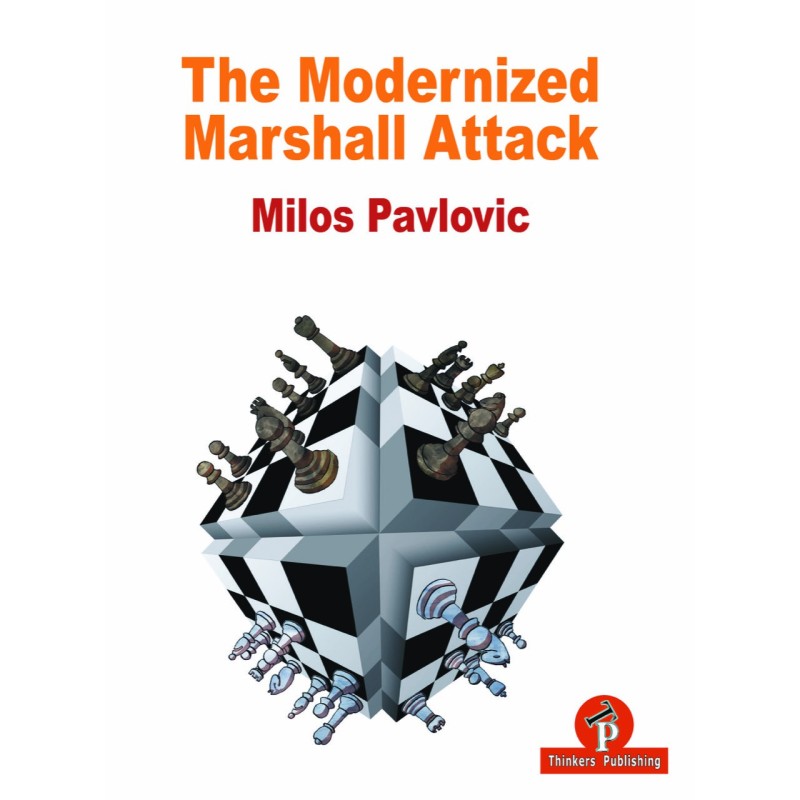




Pavlovic - Modernized Marshall Attack. Livre en anglais sur l'ouverture Marshall au jeu d'échecs. I think that nowadays it is pretty much common knowledge that the inventor of the Marshall Attack was the legendary grandmaster Frank Marshall.
Pavlovic - Modernized Marshall Attack. Livre en anglais sur l'ouverture Marshall au jeu d'échecs. I think that nowadays it is pretty much common knowledge that the inventor of the Marshall Attack was the legendary grandmaster Frank Marshall. He famously played it for the first time in a game against Capablanca in Manhattan in 1918. Capablanca was able to pick his way through the complications and win that game, but despite its inauspicious beginnings the idea has not only survived but thrived in tournament play. The former world champion, Boris Spassky, reinvented the opening in his match against Mikhail Tal in 1965, and since then the Marshall Attack has been a key weapon in the Black arsenal against the Ruy Lopez. Indeed, today it is commonly considered as one of the top three best openings against 1.e4, along with the Berlin Defence and the Najdorf Sicilian.
The list of famous players who have used and continue to use the Marshall is long indeed, with notable names being Nunn, Leko, Aronian, Svidler, and many others. I have noticed that Ding Liren is including the Marshall in his repertoire at the very highest levels. On a personal note, my knowledge of the Marshall helped me to become a grandmaster and has allowed me to play some of my best games.
This book is about the Marshall Attack and the lines which can be grouped together under the banner of the so-called Anti-Marshall. The theory has developed so much in the last decade that there is more than enough material to be going on with just in those areas, but I also decided to include a detailed look at an important line in the Exchange Variation.
Black’s key concept in the Marshall is giving up a central pawn in return for activity, and I have tried to give as many lines as possible which adhere closely to this principle. Why is this so significant? Well, for starters, usually in the Ruy Lopez Black is looking for long, slow games in solid, closed positions. The Marshall flips this on its head and Black tries to accelerate the play and radically change the character of the game at an early stage.
Let’s briefly discuss the material of the book itself and the lines that I have decided to give. First of all, I started off with the standard Marshall Attack, after the initial moves: 1.e4 e5 2.Nf3 Nc6 3.Bb5 a6 4.Ba4 Nf6 5.0-0 Be7 6.Re1 b5 7.Bb3 0-0 8.c3 d5. I have given direct analysis wherever possible and I have tried to cover all the essential lines. Of course, with the passing of the years and the continual development of theory we can see how the popularity of some positions has shifted and, in some cases, how certain lines have simply been rendered obsolete. I also discovered, to my surprise, that there are still new, unexplored, and interesting paths for further analysis.
Fiche technique